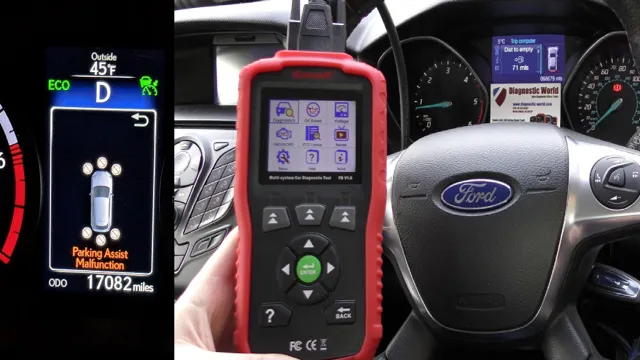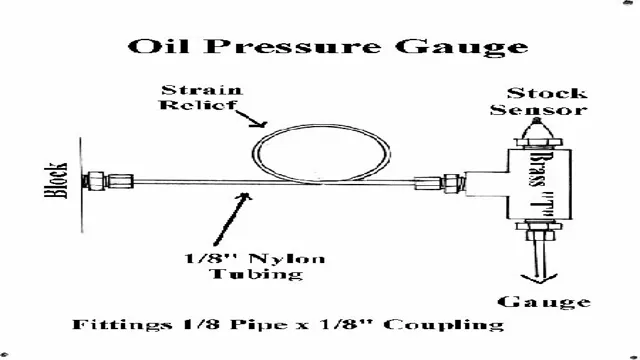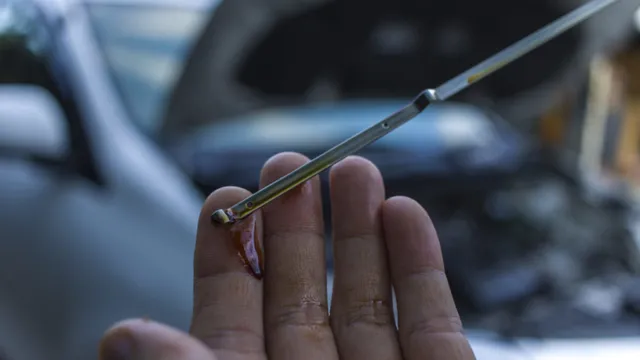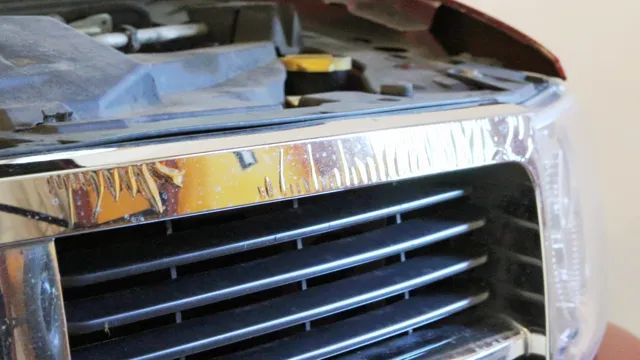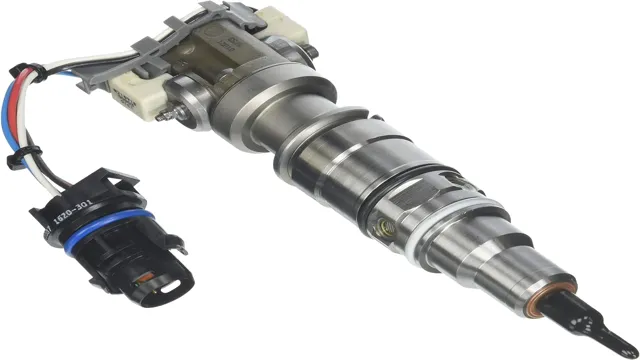Mastering the Art of Fixing Parking Aid Malfunction: Step-by-Step Guide for the Savvy Driver
Are you tired of your parking aid malfunctioning when you need it most? Sometimes, it seems like the sensor is constantly detecting an obstacle, or worse, failing to detect something entirely. This can be frustrating, especially if you’re in a hurry or in a tight spot. But don’t worry – there are solutions to fix your parking aid and get it working like new again.
In this blog, we’ll explore some common causes of parking aid malfunctions and how to fix them. Think of us as your trusty mechanic, ready to get your car back in top shape. So, grab a coffee, sit back, and let’s dive into the world of parking aid malfunctions.
Identify the Cause
One of the most frustrating things about driving is when your parking aid malfunctions. Whether it’s a camera or sensor, it can be annoying when it stops working properly. The first step in fixing a parking aid malfunction is identifying the cause.
Sometimes, it might be as simple as cleaning the camera lens or removing any debris from the sensors. Other times, it might be a wiring issue or a faulty component that needs to be replaced. If you’re unsure of what the cause is, it’s best to take your vehicle to a qualified mechanic who can diagnose and fix the problem.
In any case, it’s important to address the issue promptly to avoid any potential accidents while reversing or parking. By keeping your parking aid in good condition, you’ll have peace of mind when navigating tight spaces.
Check for Broken Sensors
When it comes to malfunctioning sensors, the first step is to identify the cause of the issue. Whether it’s a physical damage or simply a software glitch, understanding the root of the problem is essential for effectively resolving the issue. One common cause of broken sensors is wear and tear due to regular use.
This could lead to physical damage or a decrease in accuracy over time. In other cases, malfunctioning sensors can be caused by software bugs or compatibility issues with other devices or applications. Regardless of the cause, it’s important to check and diagnose the problem as soon as possible to prevent further damage and ensure accurate readings.
Regular maintenance and monitoring of sensors can help prevent such issues from arising in the first place. By paying attention to alerts and taking action when necessary, you can help keep your sensors running smoothly and effectively.
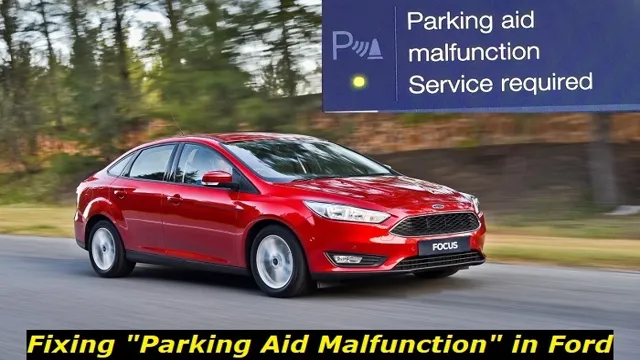
Inspect Wiring Connections
Inspecting wiring connections is a crucial step in identifying the cause of electrical problems. Loose or frayed wires can result in malfunctions or even fires, so it’s essential to check that all wires are tightly connected and in good condition. One common issue is a short circuit, which occurs when two wires touch and create a path for electricity to flow.
This can cause damage to appliances and potentially cause a fire. By inspecting wiring connections, you can also identify whether a circuit breaker has tripped, which is often a result of too much electrical load on one circuit. It’s important to take electrical safety seriously and always turn off the power before inspecting wiring connections to avoid potential harm.
By keeping an eye on your wiring connections, you can prevent future electrical issues and ensure that your home is safe and functional.
Reset the System
Parking aid malfunctions can happen at any time, leaving drivers feeling frustrated and worried about the safety of their vehicle. Luckily, resetting the system can often solve the issue. To do this, start by turning off the engine and removing the key from the ignition.
Wait for a few minutes, then start the vehicle again and check if the parking aid is still malfunctioning. If the problem persists, check the sensors for any damage or debris that might be blocking them. Additionally, ensure that the settings for the parking aid are configured correctly in the vehicle’s computer system.
By following these simple steps, drivers can quickly and easily fix a parking aid malfunction and get back on the road with peace of mind.
Disconnect the Battery
Disconnecting the battery is an essential step in resetting the system of your vehicle. Whether you are looking to clear error codes or fix an electrical issue, you must first disconnect the battery to avoid any electrical shocks. To start, locate your vehicle’s battery and ensure that the car engine is off.
You can use a wrench or socket to unscrew the negative (-) terminal, which is usually black or has a minus sign, then similarly unscrew the positive (+) terminal, which is usually red or has a plus sign. Once you’ve disconnected both terminals, wait for at least 10 to 15 minutes for any remaining electrical charge to dissipate before reconnecting. Remember to reconnect the positive terminal first, then the negative one, and tighten the screws gently to avoid over-tightening, which may damage the battery or terminals.
By disconnecting and reconnecting the battery, you will reset your car’s system and jumpstart a fresh start for optimal performance.
Wait for a Few Minutes
When your system is acting up and not functioning properly, it’s natural to feel frustrated and anxious. However, before you panic and start searching for solutions online, take a deep breath and wait for a few minutes. Sometimes, the system needs time to process and reset itself on its own.
While waiting, you can use the time to reflect and gather your thoughts on what might have caused the problem in the first place. Resetting the system is also another option to consider, as it can help fix minor issues without having to call for professional help. Just be sure to save your progress before resetting, as it can delete any unsaved data.
Remember, it’s always best to approach technical problems with patience and a clear mind. By doing so, you’ll be able to tackle the issue with a level head and potentially avoid any further complications.
Reconnect the Battery
After replacing or disconnecting the car battery, it’s important to reconnect it properly to avoid any electrical problems. However, sometimes simply reconnecting the battery isn’t enough and you may need to reset the system. This is especially true for newer cars which have complex computer systems that manage everything from the engine to the infotainment system.
To reset the system, you can follow simple steps such as turning off all electric devices within the car, wait for a few minutes, remove the negative terminal of the battery for 15 minutes, reconnect the battery, start the car and let it idle for a few minutes, then take it for a test drive. Resetting the system will help it recalibrate itself and fix any issues that may have arisen due to a faulty or disconnected battery. Remember, keeping your car’s electrical systems in good condition is just as important as regular maintenance to ensure a smooth ride.
Contact a Professional
If you’ve noticed that your parking aid is malfunctioning, the first thing to do is to check the user manual for troubleshooting steps. However, if you’re still having issues, it’s best to contact a professional for assistance. Parking aid systems can be complex and require specialized knowledge to diagnose and repair any problems.
A professional technician will have the necessary tools and experience to pinpoint the issue and provide an effective solution. It’s important not to attempt any repairs yourself, as this can cause further damage to your vehicle’s electrical system or sensors. Leave it to the experts to ensure your parking aid system is working correctly and keeping you safe while parking.
With the help of a professional, you can quickly and easily fix your parking aid malfunction and enjoy the peace of mind that comes with reliable parking assistance.
Find a Certified Mechanic
When it comes to your car’s maintenance and repair needs, it’s important to trust a certified mechanic with the job. Whether you’re dealing with a minor issue or a major repair, it’s essential to contact a professional who has the knowledge and experience to handle the task. Many people choose to take their car to a certified mechanic for a variety of reasons, including the fact that they can provide expert advice and diagnose problems accurately.
Not only that, but professional mechanics have access to specialized tools, software, and training that allow them to quickly and efficiently repair any issues with your vehicle. So, if you’re looking for a reliable and trustworthy mechanic, be sure to do your research and find one who is certified and has a good reputation among previous customers. By doing so, you can rest easy knowing that your car is in good hands and will run smoothly for years to come.
Schedule an Appointment
If you are looking to schedule an appointment with a professional, there are a few things you need to consider first. The most important thing is to make sure you find someone who is qualified and specializes in the area you need help with. It’s always a good idea to do some research, look at their reviews, and ask for referrals from friends or family.
Once you’ve found a potential professional, you should reach out to them and express your interest in setting up an appointment. Be sure to mention any specific concerns or issues you have so they can prepare accordingly. Many professionals offer virtual appointments, but if you prefer an in-person meeting, make sure to ask about their availability and location.
Scheduling an appointment can be overwhelming, but with a little research and communication, you can find the right professional to help you achieve your goals.
Prevent Future Malfunction
If you’re having issues with your parking aid, it can be frustrating and stressful. Thankfully, there are a few things you can do to prevent further malfunctions. Start by checking the sensors and making sure they are clean and free from any debris or snow.
If that doesn’t solve the problem, it could be an issue with the wiring or connections. Take a look at the user manual to see if there are any troubleshooting steps you can take before taking it to a professional. Remember, regular maintenance and cleaning can help prevent future malfunctions, so make it a habit to clean the sensors and connections every few months or so.
By staying on top of maintenance, you can avoid the headache of a malfunctioning parking aid in the future.
Conclusion
In conclusion, fixing a parking aid malfunction can be as easy as checking for loose wiring or cleaning the sensors. But let’s face it, sometimes things just don’t go according to plan and we need a little help. So, if all else fails, just put a “Baby on Board” sign up in your back window and hope for the best.
After all, that has to work better than a malfunctioning parking aid!”
FAQs
What causes parking aid malfunction?
Parking aid malfunctions can be caused by a variety of issues such as sensor damage, wiring issues, or software glitches.
How can I diagnose a parking aid malfunction?
You can diagnose a parking aid malfunction by checking the sensors or looking for any visible damage to the wiring.
Can I fix a parking aid malfunction on my own?
It’s possible to fix some parking aid malfunctions on your own by checking and repairing any damage to the wiring or sensors.
When should I take my car to a professional for a parking aid malfunction?
If you are unable to diagnose or fix the parking aid malfunction on your own, it’s best to take your car to a professional for repair and maintenance.

